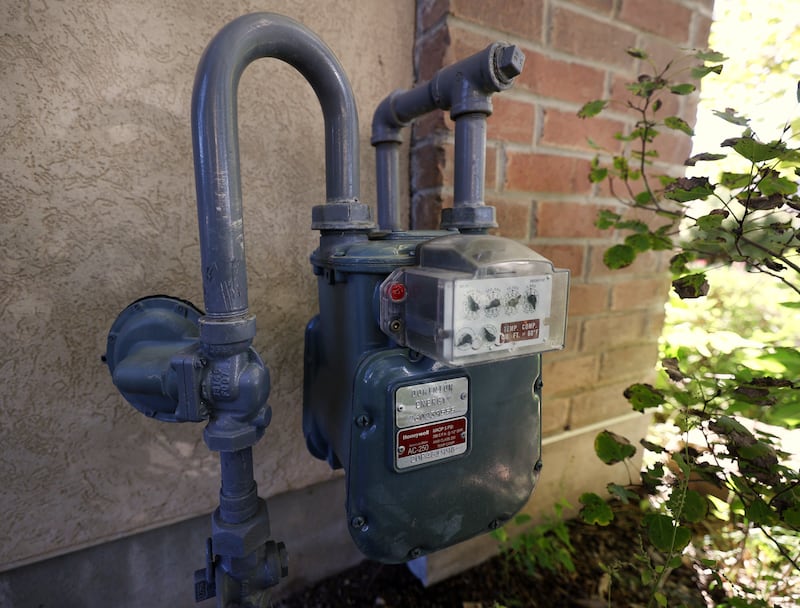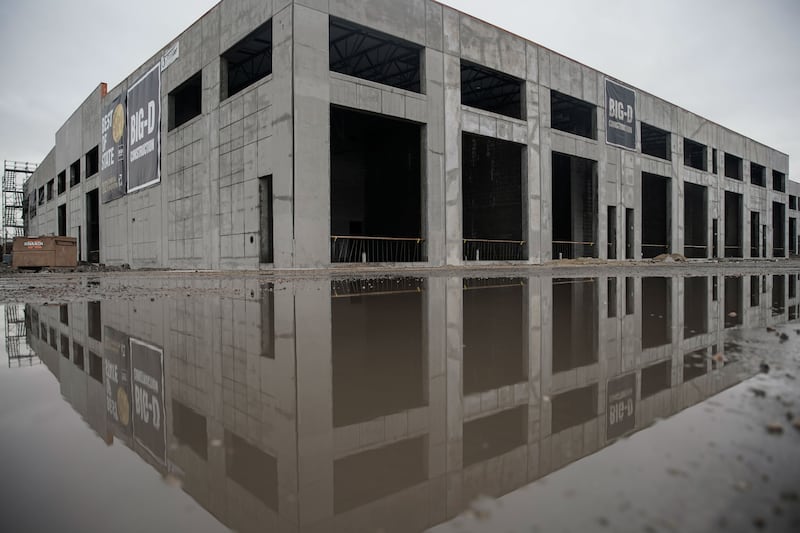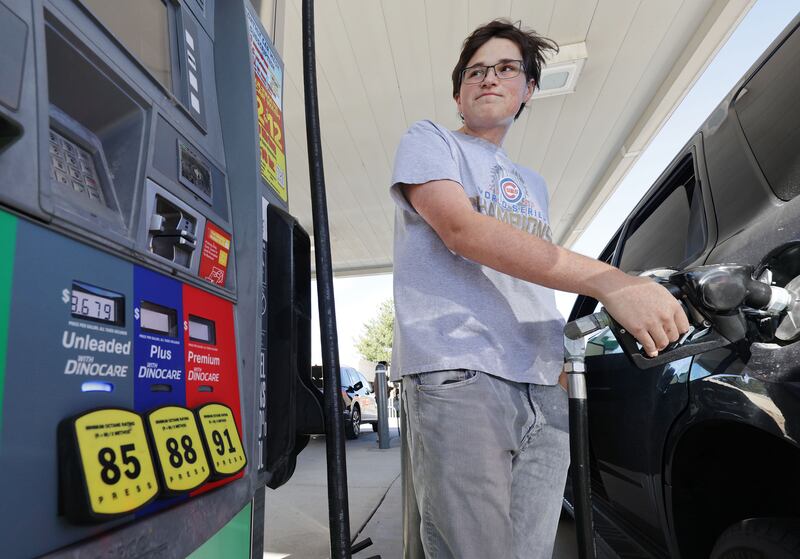Inflation is not only hurting motorists’ pocketbooks at the pump with the higher price of gasoline, but gyrations in the energy market are also leading to higher prices to heat homes and buildings.
In some areas of the country, the price of natural gas could increase as much as 47% for consumers due to increased demand, diminished supplies from events like the freezing storm in Texas earlier this year and interruptions caused by Hurricane Ida.
The price of natural gas is nearly double what it was last year, which also drove the first year-over-year increase in coal-fired power generation — by 22% — since 2014.
Don Porter, spokesman for Dominion Energy, said the company gets more than half of its natural gas from wells in Wyoming and eastern Utah and does not have to buy it on the “spot” market. Instead, the company is able to store its natural gas supplies and is not affected by the volatile market.
Consumers in Utah will see a more modest increase of 8.9% starting Nov. 1.
“As we are preparing to go into the winter season, our prices are not going to be as high as other parts of the nation because we were able to get gas out of our own storage,” he said.

Heating a home can hurt
Porter added that Dominion does not make a profit from its natural gas but is allowed pass-through rates by the Utah Public Service Commission.
“We are allowed up to a certain return on our investment for building and maintaining our lines,” he said.
On its website, Dominion Energy offers information to help customers navigate the higher prices such as payment plans or financial assistance for those who qualify.
“We want people to be warm and get the fuel they need,” Porter said.
The federal government reports that across the county, 1 in 3 households faces challenges in meeting their heating needs, and noted that of the 25 million households that reported forgoing food or medicine to pay energy bills, 7 million face making that decision every month.
The tumultuous energy crisis is also being felt around the globe.
Low natural gas inventories globally have fueled record high U.S. exports of liquified natural gas this year as COVID-19 restrictions began to ease and as multiple countries have experienced several unplanned outages of liquified natural gas facilities, according to the Energy Information Administration.

The cheapest form of energy
Those high energy prices are kindling renewed interest in the cheapest form of energy out there, the kind you don’t use via investments in energy efficiency.
“Energy efficiencies are both good for the environment and for our pocketbooks,” said Thom Carter, energy adviser to Utah Gov. Spencer Cox and director of the Governor’s Office of Energy Development. “When we look at what drives human behavior and human decisions, the questions that are being asked are if this will save me time, and if it will save me money. What we love so much about energy efficiency projects is that we are killing two birds with one stone.”
But a report by the federal government noted that energy efficiency progress hit roadblocks in 2020 as a result of the coronavirus.
While motorists stayed off the road in large measure due to lockdowns, creating decreases in fuel consumption and emissions, largely empty office space still had requirements for heating, cooling and ventilation.
Particularly in the area of ventilation, energy intensity grew as concerns over contracting COVID-19 rose during the height of the pandemic and better ventilation systems were in demand.
The report by the Energy Information Administration said that as working from home became the new normal for many in the workplace, it led to spikes as high as 30% in residential energy consumption in some areas of the United States.
So while carbon emissions decreased in some sectors, they increased in others. Residents may have been motivated to make additional investments to make their homes more energy efficient, but institutions and commercial buildings saw delays in energy efficiency upgrades for fear of spreading the virus.

A new path for Utah
But Utah is well positioned to be an innovator in the arena of energy efficiency with the announcement this week by the U.S. Department of Energy that it is one of 10 areas across the nation selected to participate in a unique program.
As part of the Connected Community initiative, projects throughout the United States will equip more than 7,000 homes and workplaces with the capability to interact with the electrical grid and optimize their energy consumption, substantially decreasing their carbon emissions.
The Connective Communities of grid-interactive efficient buildings use smart controls, sensors and analytics to communicate with the electrical grid, reducing the amount of energy they require during periods of peak demand.
Energy efficiency savings as high as 30% are expected with those participants over what a standard building requires.
A recent study by the agency estimates a savings of $18 billion a year in power system costs by using grid interactive buildings.
The Utah projects will play out in Herriman, downtown Salt Lake City, in Logan at Utah State University, and include apartment buildings, a warehouse, a home and Utah Transit Authority’s mass transit depot.
“These connected communities will demonstrate we have the wherewithal,” said Kelly Speakes-Backman, acting assistant secretary for energy efficiency and renewable energy. “We are all in. We are in an all out sprint to address the climate crisis.”
Rep. Blake Moore, R-Utah, who joined the conference call on the announcement, said grid improvements are a bipartisan issue and energy efficiency makes everyday life more affordable.
“This is a real opportunity to make us (Utah) world leaders,” he said.
The $6.4 million grant Rocky Mountain Power received helps march Utah into an energy smart destiny, added James Campbell, director of innovation and sustainability policy for Rocky Mountain Power/PacifiCorp.
“We see connected communities as the grid of the future.”



 alt=Amy Joi O'Donoghue
alt=Amy Joi O'Donoghue